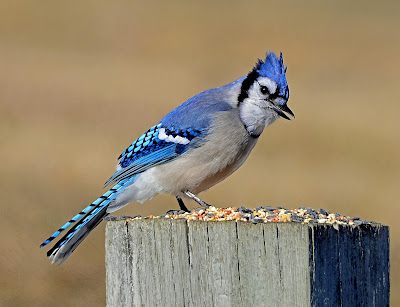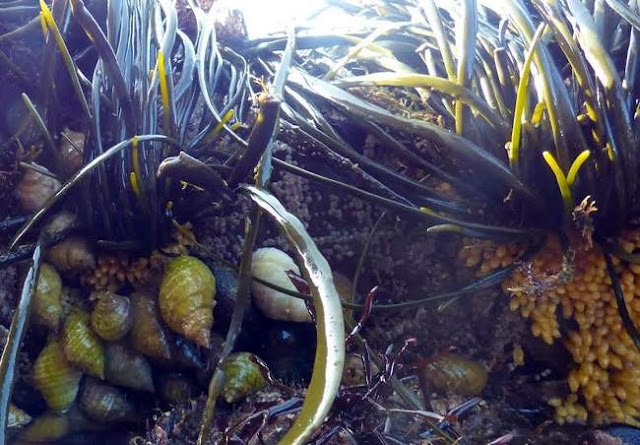NATURE NEWS
'Dead crabs' on beach are often just old exoskeletons
 |
| Rock crab exuvia Seapoint Beach Kittery Pt ME |
The crab-related question I get most often is about all those dead crabs that wash up on the beach, their little bodies tangled in the wrack-line. The amazing answer to that question (at least to me) is that more often than not those aren’t dead crabs but rather their shed exoskeletons.
Crabs belong to a group of invertebrates (arthropods) that have rigid exoskeletons, which provide protection, are the attachment points for muscles (analogous to our bones), and are often modified into tools - for example, stingers or claws for grabbing. We humans have an endoskeleton - our skeleton is inside our bodies (hence the prefix endo-), our skeletons grow as we grow. If you are a crab, and have an exoskeleton, growing larger is problematic — the exoskeleton can’t grow larger, instead it has to be shed (or molted) to accommodate growth of the crab inside. These periodic molts are a time- and energy-consuming process.
 |
| Rock crab exuvia carapace lifted to show remnants of gills |
Prior to molting, a crab will begin to absorb some of the calcium carbonate from its old exoskeleton, using this to make the new exoskeleton. It will also begin to retract all of its body parts from the old exoskeleton and begin to secrete a new soft, thin shell. According to the National Oceanic and Atmospheric Administration: “A day before molting, the crab starts to absorb seawater, and begins to swell up like a balloon. This helps to expand the old shell and causes it to come apart at a special seam that runs around the body. The carapace then opens up like a lid. The crab extracts itself from its old shell by pushing and compressing all of its appendages repeatedly. First it backs out, then pulls out its hind legs, then its front legs, and finally comes completely out of the old shell. This process takes about 15 minutes.” (from "Molting: How Crabs Grow”). When crabs molt they leave behind the old shell (often a bit thinner since they have removed some of the calcium carbonate that helps to harden the shell) as well as the coverings of the gills, eyestalks, and other body parts. Despite knowing how it happens I still think the process of molting is magic.
Two fun facts about crabs and molting: 1. males can only mate with soft, recently-molted females 2. crabs that have lost legs can regenerate them - before molting a new little limb bud appears, it will take at least three molts for the leg to grow back to its full size.
Crabs of a single species will often all molt at the same time of year, so it is common to find what looks like hundreds of dead crabs washing up on the beach. If you find a lifeless crab and want to know if it is a shed exoskeleton (the scientific word for this is exuvia) see if the top shell has separated from the bottom along the back of the shell. You should be able to open it upwards, like opening a suitcase, with the hinge being the front of the crab. Does the shell seem thinner than it should? Are there gill and other body-part remnants still inside? Do they seem to be intact and not smelly? If so, you have found an exuvia!
also published in The York Weekly, The York County Coast Star,The Portsmouth Herald, Fosters Daily Democrat



Great and interesting article, Sue! I found several of these exoskeletons on Popham Beach. I am planning to send it and some other shells to my daughter's step-kids. I will send your article along with the collection!
ReplyDeleteThanks for this blog, it's great! Hope you're well...looks like you're having a wonderful summer!
Thanks Patricia! I love finding those and knowing what they are.
ReplyDelete